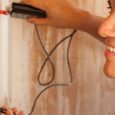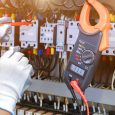In the 3D printers Offered on the market nowadays, generation of output occurs from programs of mapping that support 3D CAD programs or 3D modeling applications. Some companies have their own wares for STK formats, and PLY, VRML to permit scaling and labeling 3D viewing of text, and printing. Working the 3D Printers’ posse’s five process functions are fundamental for developing a model.
- The Print Surface is fed with a powder that was exceptional.
- The powder is Spread on print surface with a roller at a depth. This method takes a couple seconds for its conclusion.
- Color is Applied to the first layer of the powder by the normal Inkjet Print Heads.
- The Solidification of layer occurs.
- The lowering Another layer is enabled.
This process Continues Repeating until the 3D model’s completion occurs. The mix of powder results and Ink Jet Color in creation. The solidification happens this way. Consequently, if no print is performed in the specified layer or place, the powder keeps its condition, i.e. it does not get solidified. The powder becomes blown out leaving the output that is the manifestation of the drawing or model, When the printing process comes to a halt. Based on complexity and size of output, large size metal part printing singapore procedure takes approximately 1/2 an hour. These 3D printers do a job, particularly when prototypes that are working or illustrations of the objects are observed on the computer screen.

Self-replicating 3D Programmers: The ‘self-replicating rapid prototype’, better called RepRap is thought to lessen the purchase price of three-dimensional printers, thereby paving way for the future where spare components and broken objects are merely re-printed on a homely foundation. There could be a way out for production of objects that are novel and unique. At the Moment Printers of the type that is aforementioned cost around 25000. They are to capture the industry. They are being used by the industry for parts for machines such as hearing aids, aircraft engines, and spaceships.
Plummeting Prices: Adrian Bowyer has believed 3D printers’ costs as no cost besides that of raw materials would be involved to lower to around 500. He has said that build capacities up and these machines would prove to be capable. When the soft ware guiding the practice of self-replication becomes available, it would be there in the free service of the consumers. Adrian Bowyer has also stated this.
Tepid Metal: Circuits By carrying out the mix of laser and powdered 14, are built by 3D printers. However, the self-replicating 3D printers are aimed using metallic alloy of cadmium, tin, lead, and bismuth which have a low-melting stage and squirting them to have the circuits formed from a syringe that is thoroughly heated. It is not compulsory for the machine. Production of those parts which are necessary excluding microprocessors and the grease is necessary.





